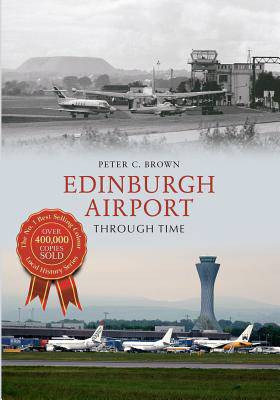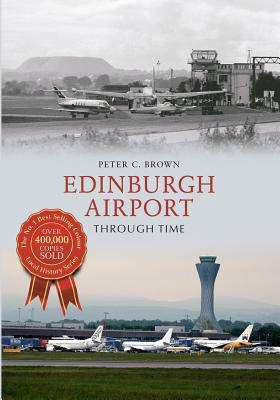
Je cadeautjes zeker op tijd in huis hebben voor de feestdagen? Kom langs in onze winkels en vind het perfecte geschenk!
- Afhalen na 1 uur in een winkel met voorraad
- Gratis thuislevering in België vanaf € 30
- Ruim aanbod met 7 miljoen producten
Je cadeautjes zeker op tijd in huis hebben voor de feestdagen? Kom langs in onze winkels en vind het perfecte geschenk!
- Afhalen na 1 uur in een winkel met voorraad
- Gratis thuislevering in België vanaf € 30
- Ruim aanbod met 7 miljoen producten
Zoeken
Omschrijving
The land around Turnhouse Farm was converted to a military airfield in 1916 following a Zeppelin attack on Edinburgh. Known as RAF Turnhouse after 1918, the site served as a base for fighter squadrons defending Edinburgh and the Firth of Forth. Edinburgh Corporation first expressed interest in February 1944 in operating civilian flights from Turnhouse after the war and in 1946 British European scheduled the first flight between Edinburgh and London. Turnhouse officially opened as a civil airport in 1949 but the site was not fully demilitarised until 1960. Passenger numbers began to increase and in 1976 a new runway was built. Between 1983 and 1984 passenger numbers at Edinburgh exceeded 1 million; for the twelve months to November 2007, they exceeded 9 million. In this book, Peter C. Brown tells the story of Edinburgh Airport using a collection of period and modern images.
Specificaties
Betrokkenen
- Auteur(s):
- Uitgeverij:
Inhoud
- Aantal bladzijden:
- 96
- Taal:
- Engels
- Reeks:
Eigenschappen
- Productcode (EAN):
- 9781445615370
- Verschijningsdatum:
- 15/10/2013
- Uitvoering:
- Paperback
- Formaat:
- Trade paperback (VS)
- Afmetingen:
- 160 mm x 234 mm
- Gewicht:
- 294 g

Alleen bij Standaard Boekhandel
+ 41 punten op je klantenkaart van Standaard Boekhandel
Beoordelingen
We publiceren alleen reviews die voldoen aan de voorwaarden voor reviews. Bekijk onze voorwaarden voor reviews.









